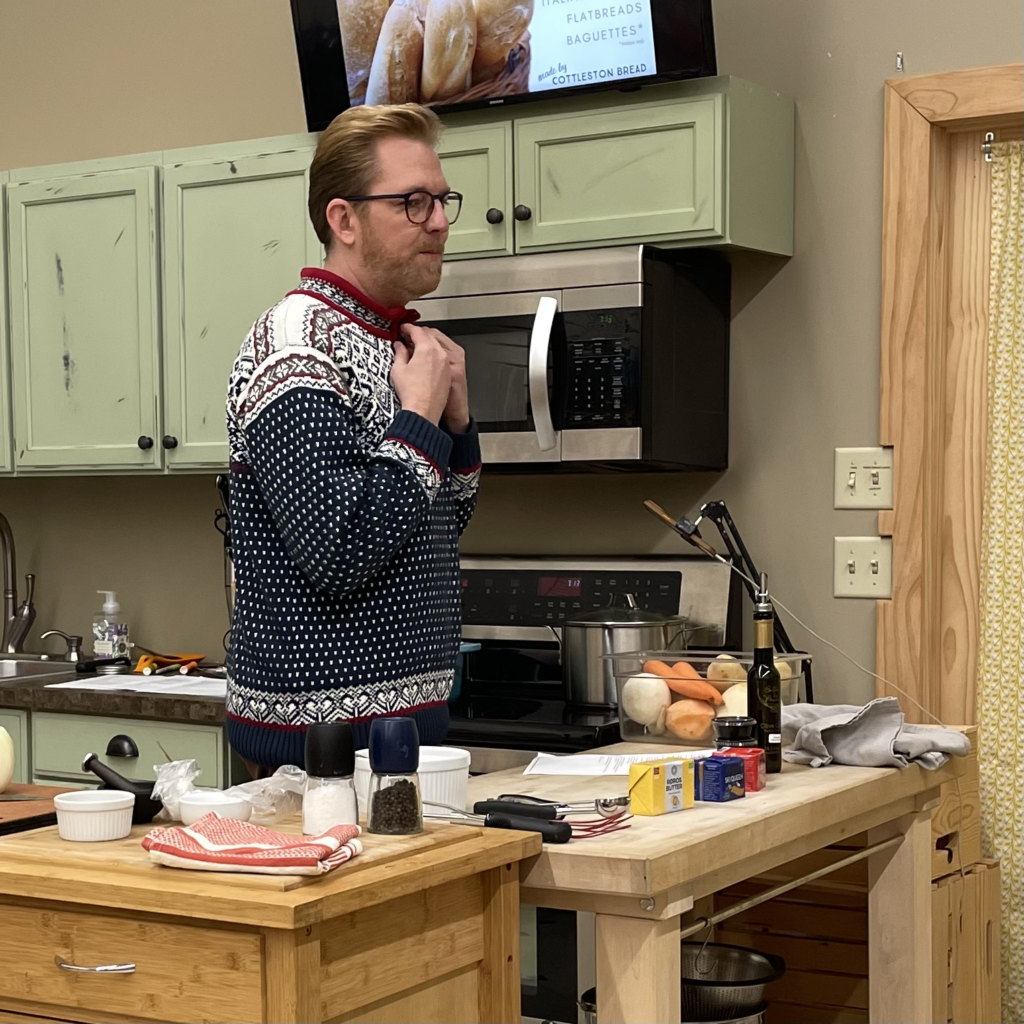Norwegian Saffroned Root Veggie Mash

Many thanks to the Brookings Arts Council and Michael Johnson from the Pheasant Restuarant & Lounge for this great virtual cooking class. This root mash is a great accompaniment to the Norwegian meatball with gjetost gravy recipe. Cutting the hard veggies smaller and the softer veggies larger helps them all finish cooking at about the same time.
You can watch a video of the cooking class here.
Print
Norwegian Saffroned Root Veggie Mash
Description
The perfect accompaniment to Norwegian meatballs with gjetost gravy.
Ingredients
- Rutabaga*
- Russet Potatoes
- Sweet Potatoes
- Turnips
- Parsnips
- Carrots
- Good quality butter
- Heavy cream
- Saffron**
- Sea salt and cracked black pepper
(Any combination of root veggies works, but rutabaga is traditionally the dominant ingredient. A simpler version would be: rutabaga, potato, and carrot mashed with butter, heavy cream, salt, and black pepper. The saffron is just a little “extra,” but it really elevates this side.)
Instructions
- Wash and peel all veggies. Be sure to remove any wax. Coarsely chop. Tougher veggies, like carrots, can be cut smaller to ensure even cooking with more tender veggies. Boil to desired tenderness. 15-20 minutes for a textured mash. (Increase the boiling time for a smoother puree if you desire.)
- While the veggies are boiling, bloom a generous pinch of saffron by using a mortar and pestle with a pinch of salt and/or sugar. In a small dish, add a teaspoon of boiling water and rest for 10 minutes. Melt some of the butter to be added to the mash, and add the bloomed saffron to the butter. Allow to rest until veggies are ready to be mashed.
- When veggies are done boiling, drain and use the saffron butter and heavy cream to mash with a hand masher to achieve a textured mash. Add as much butter and cream as you prefer, but do not allow to become runny. Season to taste with salt and freshly cracked pepper. (If you want a smooth puree, use a stick blender or hand mixer.)
Notes
This reheats well and the saffron will be more present the second day.
*Large rutabagas can be difficult to cut. If you can find smaller ones, they will be easier to manage.
**There are so many ways to use up saffron, and just a generous pinch can really add a luxurious and cozy nuance. It can be added to breads and baking, curries, BBQ, grill rubs, sweet desserts, anything creamy, couscous, risotto, pasta, soups, roast chicken rice sides, and wild game. It should never really be a problem to get the value of purchasing it, though it seems expensive compared to other spices. (It keeps for 6-9 months before beginning to lose flavor. Saffron from specialty shops is much higher quality and usually more affordable than those found at a grocery chain.)

